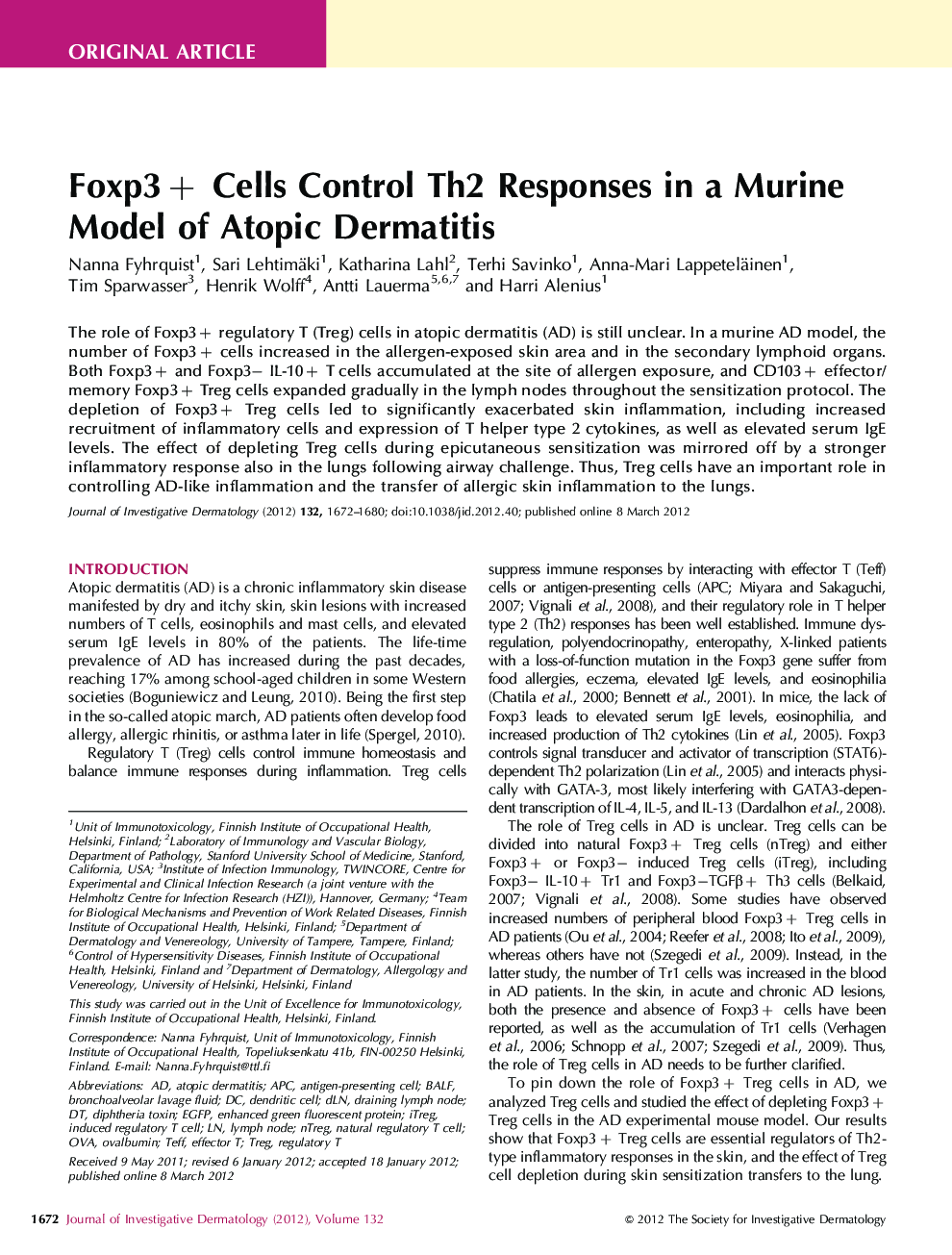| Article ID | Journal | Published Year | Pages | File Type |
|---|---|---|---|---|
| 3216410 | Journal of Investigative Dermatology | 2012 | 9 Pages |
The role of Foxp3+ regulatory T (Treg) cells in atopic dermatitis (AD) is still unclear. In a murine AD model, the number of Foxp3+ cells increased in the allergen-exposed skin area and in the secondary lymphoid organs. Both Foxp3+ and Foxp3- IL-10+ T cells accumulated at the site of allergen exposure, and CD103+ effector/memory Foxp3+ Treg cells expanded gradually in the lymph nodes throughout the sensitization protocol. The depletion of Foxp3+ Treg cells led to significantly exacerbated skin inflammation, including increased recruitment of inflammatory cells and expression of T helper type 2 cytokines, as well as elevated serum IgE levels. The effect of depleting Treg cells during epicutaneous sensitization was mirrored off by a stronger inflammatory response also in the lungs following airway challenge. Thus, Treg cells have an important role in controlling AD-like inflammation and the transfer of allergic skin inflammation to the lungs.
